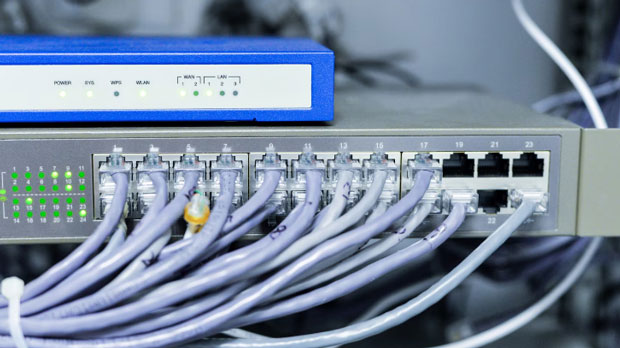Will a free proxy IP service affect my data crawl? What advantages do paid proxies offer?
In today's digital landscape, data scraping has become an essential tool for businesses, researchers, and marketers seeking to gather valuable information from websites. However, the choice of proxies plays a significant role in the success and efficiency of data scraping operations. Free proxy ip services are often attractive due to their cost-effectiveness, but they may come with several limitations that could hinder your scraping activities. On the other hand, paid proxies offer numerous advantages that can elevate your data scraping experience. In this article, we will explore the impact of free proxies on data scraping and the benefits of switching to paid proxies. The Role of Proxy IP in Data Scraping proxy ips act as intermediaries between your device and the target website during data scraping, masking your original IP address. This is crucial for bypassing website restrictions, evading rate limits, and ensuring anonymity while collecting large volumes of data. Without proxies, repeated requests from a single IP address can trigger security mechanisms like CAPTCHAs, rate-limiting, or even permanent bans. By distributing requests across multiple proxy ip addresses, data scraping can proceed smoothly, ensuring efficient data collection without raising suspicion.Free Proxy Services: The DrawbacksWhile free proxy IP services seem like an appealing choice for individuals or businesses on a tight budget, they come with several downsides that can directly impact your data scraping efforts:1. Limited Bandwidth and Speed Free proxies often offer limited bandwidth, meaning that data scraping operations can be slow and inefficient. In many cases, users experience throttling or delays due to overcrowded proxy networks. When scraping large amounts of data, such delays can severely disrupt the process, leading to incomplete datasets and wasted time.2. Security Risks Free proxy services are often less secure than their paid counterparts. Many free proxies are open, public servers that are vulnerable to data breaches or malicious attacks. If you're handling sensitive data, free proxies could expose you to significant security risks, including data theft and unauthorized access.3. Unreliable Uptime and Connection Stability Another key issue with free proxy services is their poor reliability. Free proxies are often unstable and may go offline unexpectedly. If a proxy connection drops during a scraping session, it can result in the loss of valuable data or the disruption of ongoing processes. Additionally, free proxies are frequently shared by numerous users, leading to inconsistent connection speeds and uptime.4. Limited Locations and IP Diversity Free proxy services typically provide a limited number of IP addresses from a few regions. If your data scraping needs involve accessing content from different geographical locations, free proxies may not be able to offer the variety and flexibility required. This lack of diversity can limit your ability to scrape region-specific data or bypass geo-restricted content.5. Lack of Customer Support With free proxy services, there is little to no customer support available. If you encounter issues during data scraping, you may find yourself troubleshooting on your own. In contrast, paid proxies often come with dedicated support teams that can assist with any technical difficulties or issues that arise.Advantages of Paid Proxy Services for Data ScrapingWhile free proxies can be useful for occasional or low-volume scraping tasks, switching to paid proxies offers several advantages that significantly enhance the overall data scraping experience:1. High-Speed and Reliable Connections Paid proxy services tend to offer faster and more stable connections. With dedicated servers and better infrastructure, paid proxies allow for efficient data scraping without experiencing significant delays or timeouts. High-speed connections are especially important when scraping large datasets or when you need to gather information in real-time.2. Enhanced Security and Privacy Security is one of the most significant advantages of paid proxies. Paid proxy services typically use encrypted connections and offer higher levels of protection against hacking and data breaches. For businesses dealing with confidential or sensitive data, using paid proxies ensures that their operations remain secure and their information is safeguarded from malicious actors.3. Greater IP Diversity and Geographic Flexibility Paid proxy providers usually offer a vast pool of IP addresses from various locations around the world. This diversity is crucial when scraping data from websites that have region-specific content or content that is geo-blocked. With paid proxies, you can rotate IP addresses, ensuring that each request appears to come from a different location, reducing the risk of detection and blocking.4. No Restrictions on Usage Unlike free proxy services, paid proxies typically offer unlimited usage and fewer restrictions. Free proxies often limit the number of requests you can make, impose bandwidth caps, or limit access to certain websites. Paid proxies, however, allow for unlimited scraping without running into these limitations, making them more suitable for high-volume data extraction tasks.5. Dedicated Customer Support When using paid proxies, you have access to customer support teams that can assist you in resolving any issues that may arise during the scraping process. Whether it's troubleshooting connection problems, configuring the proxies, or addressing any concerns, dedicated support ensures that your scraping operations are seamless and efficient.6. Better Anonymity and Reduced Risk of Blocking Paid proxy services often provide enhanced anonymity features, such as rotating IP addresses and advanced anti-blocking mechanisms. By continually changing the IP address used for each request, you can avoid detection and minimize the chances of being blocked by the target website. This makes paid proxies a valuable tool for large-scale web scraping projects, where bypassing security measures is critical.Conclusion: Free vs. Paid Proxies for Data ScrapingChoosing between free and paid proxy services ultimately depends on the scale, scope, and security needs of your data scraping project. Free proxies may work for occasional or small-scale scraping tasks but come with significant limitations, such as slow speeds, poor security, and a lack of reliable support. On the other hand, paid proxies offer superior performance, enhanced security, better anonymity, and the flexibility needed to handle large-scale scraping operations.For serious data scraping activities that require reliability, speed, and security, investing in paid proxies is the wiser choice. While the upfront cost of paid proxies may seem higher, the benefits they provide in terms of efficiency, protection, and overall success make them a worthwhile investment for businesses and individuals who rely on consistent, high-quality data scraping.In conclusion, while free proxies might seem like an attractive option, the risks and limitations they impose on data scraping operations are significant. Paid proxies, with their advanced features and dedicated support, offer a far more robust solution for high-quality, efficient, and secure data scraping.
2025-01-31

























































